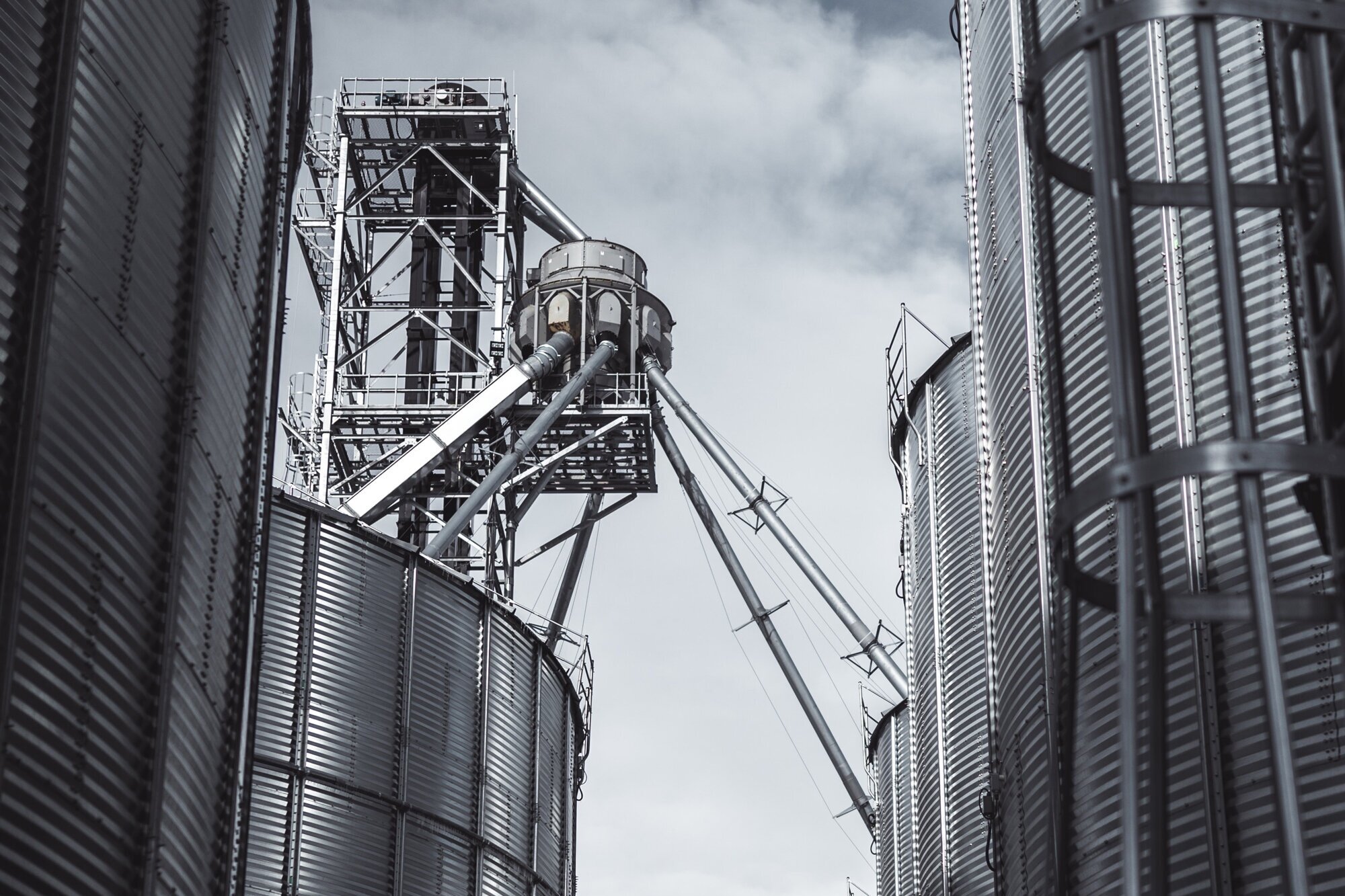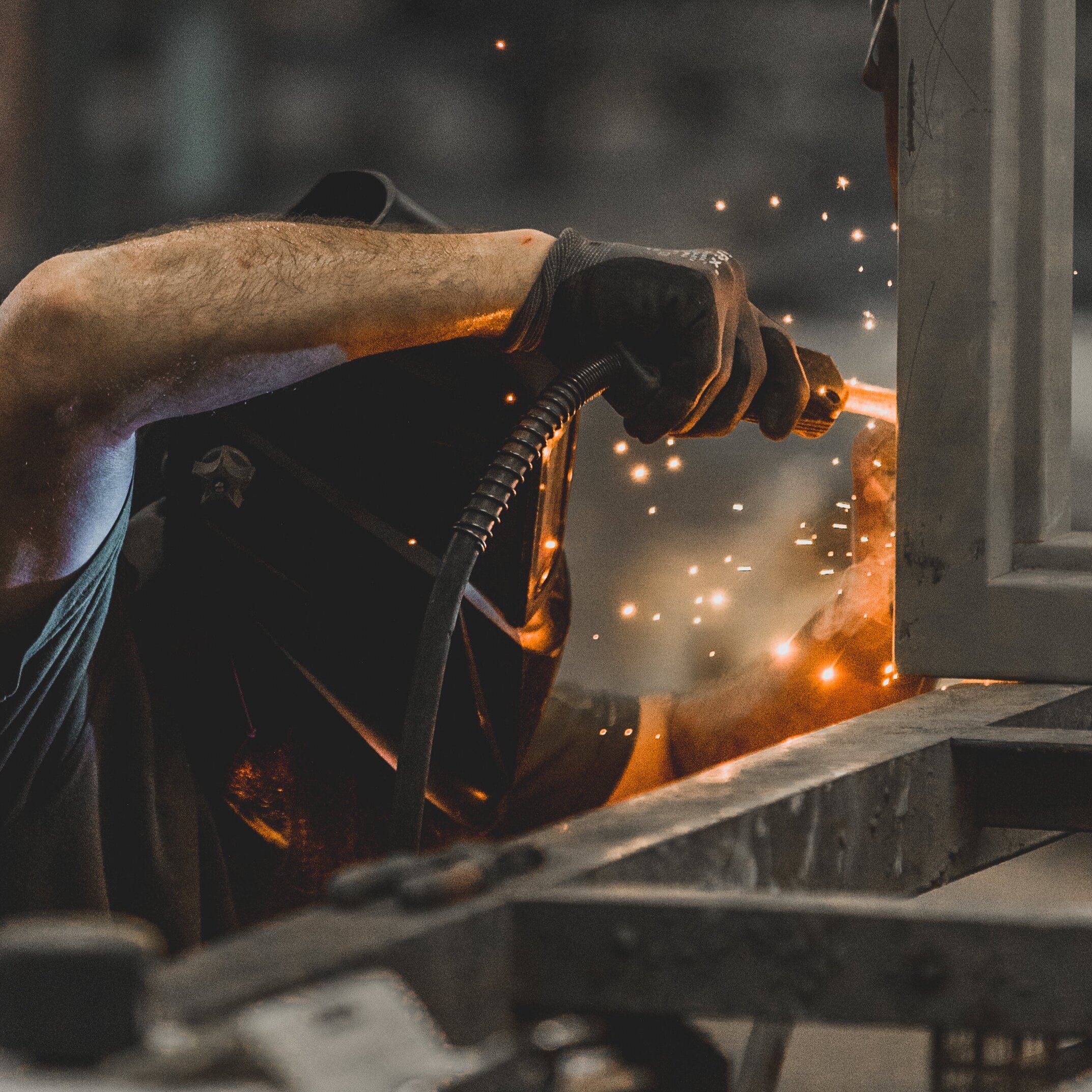The 7 Basic Steps of Metal Fabrication
What You Need to Know About the Metal Fabrication Process
Need some hinges for a door? A railing for those outdoor stairs? A commercial refrigerator for your restaurant? An entire airplane? Well, metal fabricators do all of this and more!
What Is Metal Fabrication?
Metal fabrication is taking a raw material, typically sheets of metal, through a series of processes to create a finished end product. Virtually every industry relies on metal fabrication to operate efficiently, create the tools they need, develop products, etc. As you can see, it is a very broad industry that helps the entire world run.
What Are the Basic Steps of Metal Fabrication?
Because the metal fabrication business has applications in nearly every industry, there are many different processes and techniques that are used to create an endless variety of products. The floor of a metal fabrication shop is a diverse place full of tools for cutting, stamping, bending, hole punching, melting, coating, and more.
The 7 Basic Steps of Metal Fabrication
Step 1: Designing
Before anything else, the project must be designed. While some fabricators still rely on hand-drawn diagrams, and those can be sufficient for basic projects, modern engineers generally use CAD (computer aided design) software, such as AutoCAD or Solidworks. CAD allows for increased complexity and complete accuracy as they create and test models to exact specifications. Digital CAD files are also generally needed for metal laser cutting.
For projects with multiple, replicable parts, such as brackets, panels, fittings, or housings, a working prototype is usually created before the project moves onto full production. This pro-production testing ensures the quality of the finished product and allows the customer to test the product in real world applications.
Step 2: Cutting
There are many ways to cut plate and sheet metal. Laser cutting, mechanical shearing, and water jet cutting are all widely used methods to achieve precise cuts for all types of metal. There is a very low tolerance for error in any metalworking project, so choosing the right method for cutting the plate and sheet metal is very important.
The type of metal must be considered as well as the intended purpose and degree of precision required. The thickness and hardness of the metal is also an important factor to consider. Laser cutting is the most precise way to cut sheet metal, especially when intricate designs or extreme accuracy is required. Mechanical shearing and other types of metal cutting methods are best when the sheet metal is very thick and requires more physical force. For more on cutting methods, click here.
Step 3 Forming
This step includes one or several of the following; folding, bending, stamping, punching holes, machining, and much more to achieve the right shape. Sometimes a piece of metal that has been cut is formed, stamped, or bent into the final shape, or molten metal is poured into a mold to harden, which is a process called casting. If the product requires holes, a drill or a hole punch is used. A lathe will trim down the edges and sides of the metal until the right size and shape is achieved.
Step 4. Assembling
After the metal parts are formed into the correct shape, they must then be assembled into the proper configuration to make the final product. The separate parts are fitted together, and normally held in place by clamps until they are fused together. Then, the parts are put together with bonding, screwing, riveting, or most commonly, welding. There are many different types of welds, but the most commonly used method is stick welding, which uses a welding gun that continuously feeds a rod of metal, melting it onto the joint using an electrical current.
Step 5: Finishing
For the final step, protective coatings such as rust resistant paint, color, or glazes are applied, either through painting or powder coating. Depending on the final product, the parts may also be brushed, polished, and shined. Then, finishing touches, such as decals, insulators, and safety mechanisms are applied. Now we have our final product that is ready for delivery to the customer, a store warehouse, or another business such as a factory or food service establishment!
Step 6: Installing
Some fabricated pieces, such as consumer products, brackets, and small parts, don’t require professional installation. Nevertheless, large or sensitive fabrications often require the skill, equipment, and expertise of trained engineers, welders, and pipefitters. Such large projects can include everything from large structural elements to automated food processing equipment to fixed metal signage.
Working with a one-stop fabrication shop can make this portion of the process a breeze. Since the same company that made the metal product is also installing it, they have better familiarity with the specs of the project and the needs of the customer. These fabrication and installation teams are able to both build the projects with the installation in mind and install with the fabrication in mind. They’re also able to make modifications as needed, in case the scope of the project changes mid-course or there are unanticipated changes in the customer’s application. Plus, it’s usually cheaper than hiring two separate firms.
Step 7: Maintaining
Many metal fabrication shops, including Sattler Manufacturing, provide maintenance and repair as part of their offered services. Nothing lasts forever, and it’s important to keep equipment in top-shape to ensure the stability of manufacturing and processing operations. A good maintenance plan can include routine serving and cleaning of equipment, as well as timely repairs. Having a metal shop to call before something goes wrong or wears out is a great idea and risk prevention strategy.
Conclusion
Hopefully, you now have a better idea of what the metal fabrication process entails. Rather than being a simple, straightforward process, there are many factors to consider and many techniques that are used when creating metal products. It is an incredibly wide-reaching business; metal fabricators are important players behind the scenes in every industry. And it takes tremendous skill and experience to do each project right.
If you have additional questions, need a quote on a project, or are looking for a metal fabrication shop to work with, contact us at Sattler Manufacturing! We have a highly experienced and professional team who are standing by to help you with anything you need. We hope to hear from you soon!








